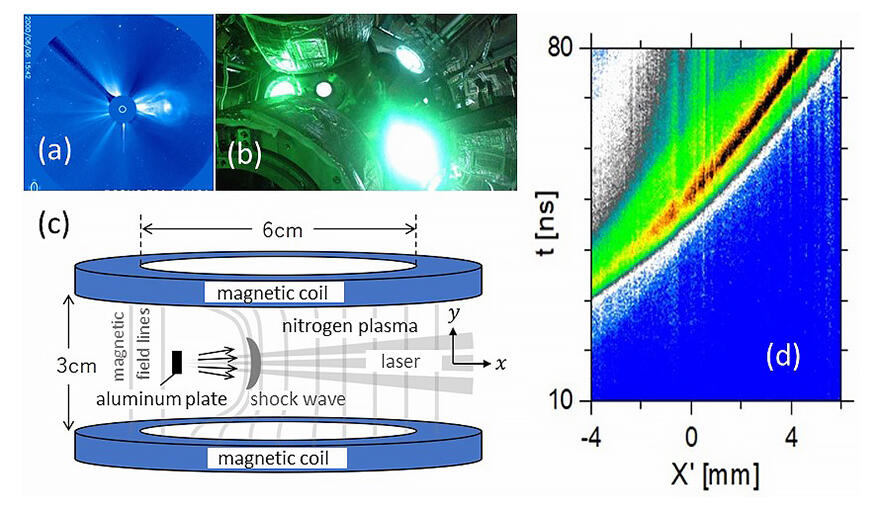A research group led by Associate Professor Youichi Sakawa, Professor Yasuhiro Kuramitsu, and Assistant Professor Takayoshi Sano of the Institute for Laser Engineering, Osaka University, Associate Professor Shuichi Matsukiyo, Assistant Professor Taichi Morita, and Assistant Professor Shogo Isayama of Kyushu University, Professor Ryo Yamazaki and Assistant Professor Shuta Tanaka of Aoyama Gakuin University, Assistant Professor Tachi Takezaki of the University of Toyama, and Associate Professor Kentaro Tomita of Hokkaido University, have successfully generated space plasma shock waves in a laboratory using a laser.

Provided by Shuichi Matsukiyo, Kyushu University
The plasma that fills space is a supersonic fluid produced by various stellar and astronomical phenomena. Space plasma shock waves are thought to play the role of energy transformers that convert the enormous energy of astronomical phenomena, but the mechanism behind this conversion is complex and remains a mystery.
The research group generated space plasma shock waves in a laboratory using the Gekko Ⅻ laser at the Institute of Laser Engineering, Osaka University, to identify its structure. To reproduce conditions similar to those in space, they secured a sufficiently large testing area, filled a device with uniform nitrogen gas, and applied a uniform, strong magnetic field. Under these conditions, they then irradiated an aluminum plate with four beams of long pulse laser, to create a plasma flow that spread from the plate. This blast compresses the surrounding nitrogen gas (nitrogen plasma), which creates and propagates a shock wave.
This method of generating a shock wave is unique to the research group and can be used to measure shock wave parameters more accurately than previously proposed methods to create shock waves. In addition to the gradual compression of the nitrogen plasma, the experiment allowed the research group to capture the formation of a shock wave as sufficient compression occurred for the first time.
"The addition of experiments as a research tool for cosmic phenomena could greatly advance the study of shock waves," explains Dr. Sakawa. "We hope to learn the mechanism behind how cosmic rays are produced, which we think are created by plasma shock waves."
Journal Information
Journal: Physical Review E
Tile: High-power laser experiment on developing supercritical shock propagating in homogeneously magnetized plasma of ambient gas origin
DOI:https://doi.org/10.1103/PhysRevE.106.025205
This article has been translated by JST with permission from The Science News Ltd.(https://sci-news.co.jp/). Unauthorized reproduction of the article and photographs is prohibited.




